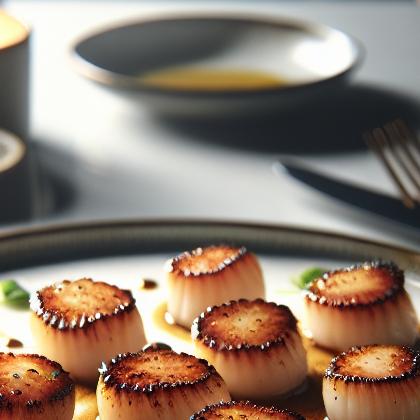Showing results for 'Scallops'
close
Scallops

A scallop (/ˈskɒləp/ or /ˈskæləp/; from Old French escalope, meaning "shell") is a common name applied to many species of marine bivalve mollusks in the family Pectinidae, the scallops. Scallops are a cosmopolitan family, found in all of the world's oceans.Many scallops are highly prized as a food source; the name "scallop" is also applied to the meat of these animals when it is used as seafood. The brightly colored, fan-shaped shells of some scallops, with their radiating, fluted patterns, are valued by shell collectors, and have been used since ancient times as motifs in art and design.
Scallops Pairs With:
Food Item
Flavor Affinity Level

Did you know there are 237 food flavor pairings in my database for Scallops available. What you are seeing above is a random list of 30 items which pair with Scallops.
For the entire list, beautifully formatted, enter your email address and click the download button below, then I'll email it to you as a PDF.
Scallops Properties:
| Food Property | Type | Description |
|---|---|---|
| Flavor Profile | Umami | Scallops have a rich, savory flavor often described as umami. |
| Texture | Firmness | Scallops have a firm texture when cooked properly. |
| Moisture | Scallops are known for their moist and succulent texture when cooked correctly. | |
| Nutritional Value | Macronutrients | Scallops are a good source of protein, low in fat, and rich in vitamins and minerals. |
| Micronutrients | Scallops contain essential micronutrients such as zinc, selenium, and vitamin B12. | |
| Color | Natural Pigments | Scallops have a natural pale beige color with some variations depending on species and freshness. |
| Aroma | Volatile Compounds | Scallops have a subtle, sweet aroma with hints of the sea. |
| Chemical Composition | Water Activity (aw) | Scallops have a relatively high water activity, which contributes to their moist texture. |
| Cooking Behavior | Heat Conductivity | Scallops cook quickly due to their high heat conductivity. |
| Water Retention | Scallops retain moisture well when cooked properly. |
Food Pairing App - Version 1.2.0
